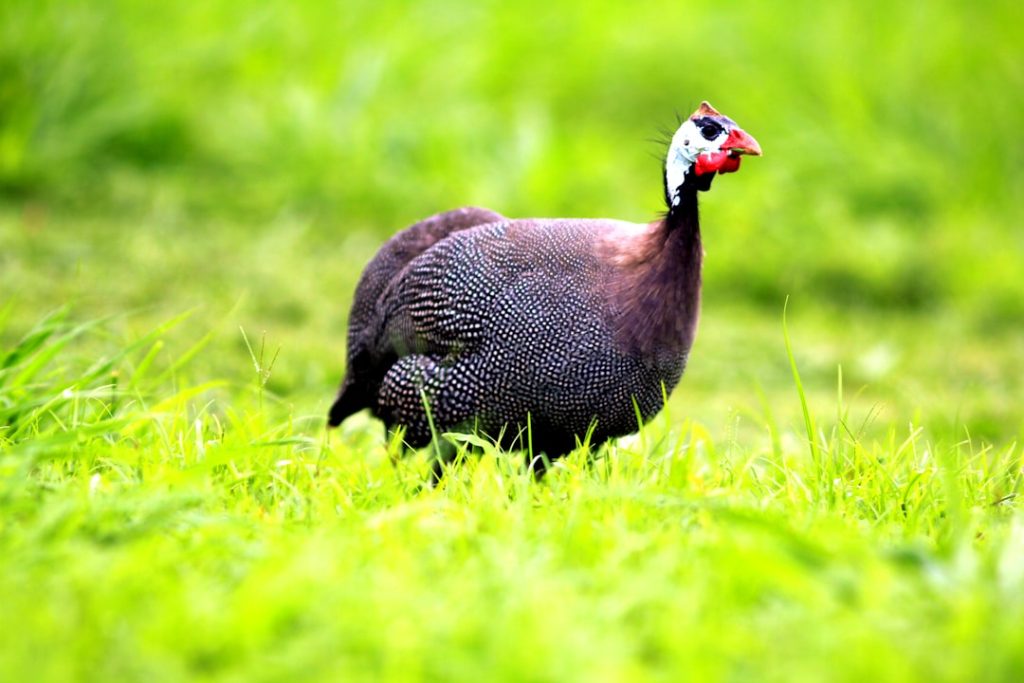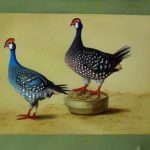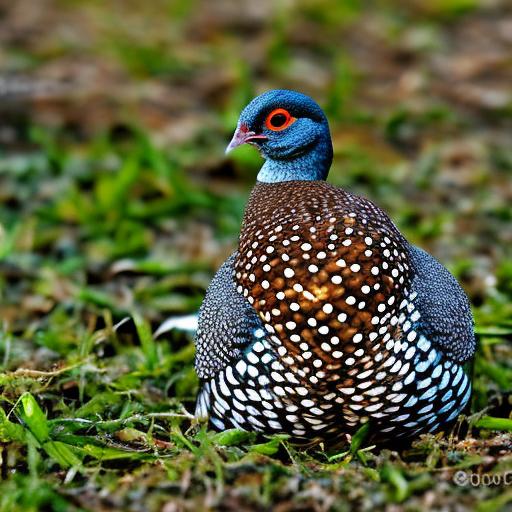Guinea fowl are fascinating birds that have been domesticated for centuries. They are known for their unique appearance, loud calls, and ability to control pests in the garden. While the common guinea fowl breeds are well-known and widely raised for their meat and eggs, there are also rare breeds of guinea fowl that are less common but equally interesting. These rare breeds often have distinct characteristics and traits that make them valuable for conservation and breeding programs. In this article, we will explore the characteristics and traits of rare guinea fowl breeds, their history and origins, conservation efforts, challenges and benefits of raising them, popular rare guinea fowl breeds for farming and conservation, and the future prospects for these unique birds.
Table of Contents
Key Takeaways
- Rare guinea fowl breeds are unique and valuable for their genetic diversity and conservation potential.
- Rare guinea fowl breeds exhibit a wide range of characteristics and traits, including different color patterns and sizes.
- The history and origins of rare guinea fowl breeds can be traced back to specific regions and cultures around the world.
- Conservation efforts for rare guinea fowl breeds are crucial to prevent their extinction and preserve their genetic diversity.
- Raising rare guinea fowl breeds presents challenges but also offers benefits such as sustainable pest control and potential economic opportunities.
Characteristics and Traits of Rare Guinea Fowl Breeds
Rare guinea fowl breeds often have unique characteristics and traits that set them apart from the more common breeds. For example, the vulturine guinea fowl is known for its striking appearance, with a blue face, white spots, and long, elegant feathers. This breed is also larger than other guinea fowl breeds and has a more docile temperament, making it a popular choice for ornamental purposes. Another rare breed, the crested guinea fowl, is known for its distinctive crest of feathers on its head, which gives it a regal and elegant appearance. This breed is also prized for its ability to thrive in a variety of climates and its excellent foraging abilities. Additionally, the white guinea fowl is a rare breed that stands out for its pure white plumage, making it a popular choice for ornamental purposes and as a unique addition to a flock of more common guinea fowl breeds. These rare breeds often have traits that make them valuable for conservation efforts and breeding programs, as they can contribute genetic diversity and unique characteristics to the overall guinea fowl population.
Rare guinea fowl breeds also exhibit a wide range of behaviors and vocalizations that make them interesting and valuable for conservation and breeding programs. For example, the rare tufted guinea fowl is known for its distinctive tuft of feathers on its head, as well as its loud and distinctive calls. This breed is prized for its ability to alert other birds to potential threats and its strong maternal instincts, making it a valuable addition to breeding programs. The rare coral blue guinea fowl is known for its vibrant blue plumage and its active and social nature. This breed is often raised in small flocks and is valued for its ability to thrive in a variety of environments and its strong foraging abilities. Additionally, the rare lavender guinea fowl is known for its gentle and friendly disposition, making it a popular choice for backyard flocks and conservation efforts. These unique behaviors and vocalizations make rare guinea fowl breeds valuable for both farming and conservation purposes, as they can contribute to the overall genetic diversity and health of the guinea fowl population.
History and Origins of Rare Guinea Fowl Breeds
The history and origins of rare guinea fowl breeds can be traced back to their native habitat in Africa, where they have been domesticated for thousands of years. Guinea fowl are believed to have been first domesticated in ancient Egypt, where they were prized for their pest control abilities and their flavorful meat. Over time, different breeds of guinea fowl developed in various regions of Africa, each with its own unique characteristics and traits. As trade routes expanded, guinea fowl were introduced to Europe and other parts of the world, where they became popular for their pest control abilities and their adaptability to different climates. Today, rare guinea fowl breeds can be found in various parts of the world, where they are valued for their unique appearance, behaviors, and genetic diversity.
Conservation Efforts for Rare Guinea Fowl Breeds
Conservation efforts for rare guinea fowl breeds are essential to ensure the long-term survival of these unique birds. Many rare guinea fowl breeds are at risk of extinction due to habitat loss, hunting pressure, and competition from introduced species. Conservation organizations and breeders are working to preserve these rare breeds through breeding programs, habitat restoration, and education initiatives. One example of a successful conservation effort is the American Livestock Breeds Conservancy (ALBC), which works to conserve rare breeds of livestock, including guinea fowl. The ALBC maintains a registry of rare guinea fowl breeds and provides resources and support for breeders and conservationists. Additionally, zoos and wildlife parks often participate in breeding programs for rare guinea fowl breeds to ensure their survival in captivity and potentially reintroduce them into their native habitats in the future.
Challenges and Benefits of Raising Rare Guinea Fowl Breeds
Raising rare guinea fowl breeds presents both challenges and benefits for farmers and conservationists. One challenge is the limited availability of rare breeds, as they may be more difficult to find than common guinea fowl breeds. Additionally, rare guinea fowl breeds may require specialized care and management to thrive, as they may have specific dietary or environmental needs. However, raising rare guinea fowl breeds also offers numerous benefits, such as contributing to genetic diversity within the overall guinea fowl population, preserving unique traits and characteristics, and potentially creating new market opportunities for specialty products such as eggs or meat from rare breeds. Additionally, raising rare guinea fowl breeds can be a rewarding experience for farmers and conservationists who are passionate about preserving these unique birds for future generations.
Popular Rare Guinea Fowl Breeds for Farming and Conservation
Several rare guinea fowl breeds are popular choices for farming and conservation due to their unique characteristics and traits. The vulturine guinea fowl is one such breed that is prized for its striking appearance and docile temperament. This breed is often raised for ornamental purposes and is valued for its ability to thrive in a variety of environments. The crested guinea fowl is another popular rare breed that is known for its distinctive crest of feathers on its head and its adaptability to different climates. This breed is often raised for both farming and conservation purposes due to its unique appearance and strong foraging abilities. Additionally, the white guinea fowl is a popular choice for ornamental purposes and as a unique addition to a flock of more common guinea fowl breeds due to its pure white plumage.
Future Prospects for Rare Guinea Fowl Breeds
The future prospects for rare guinea fowl breeds are promising due to increased awareness of their value for genetic diversity and conservation efforts. As more farmers and conservationists recognize the importance of preserving rare breeds of livestock, including guinea fowl, there is growing interest in raising and conserving these unique birds. Additionally, advancements in breeding techniques and technology are making it easier to maintain genetic diversity within rare guinea fowl breeds and ensure their long-term survival. With continued support from conservation organizations, breeders, and enthusiasts, rare guinea fowl breeds have a bright future ahead as valuable contributors to the overall health and diversity of the guinea fowl population.
In conclusion, rare guinea fowl breeds are valuable contributors to the overall genetic diversity and health of the guinea fowl population. These unique birds exhibit a wide range of characteristics, behaviors, and traits that make them valuable for farming and conservation purposes. Through conservation efforts, education initiatives, and breeding programs, rare guinea fowl breeds can be preserved for future generations to enjoy their beauty and contribute to sustainable agriculture practices. As awareness of the value of rare guinea fowl breeds continues to grow, their future prospects are promising, with opportunities to contribute to genetic diversity, create new market opportunities, and ensure their long-term survival in captivity and potentially in their native habitats.
If you’re interested in rare breeds of guinea fowl, you might also want to check out this informative article on how many eggs geese lay. It’s a fascinating read that delves into the breeding habits of geese and provides valuable insights for poultry enthusiasts.
FAQs
What are rare breeds of guinea fowl?
Rare breeds of guinea fowl are varieties of guinea fowl that are not commonly found or are less common than the more popular breeds. These rare breeds may have unique physical characteristics or color patterns.
What are some examples of rare breeds of guinea fowl?
Some examples of rare breeds of guinea fowl include the White Crested, Royal Purple, Coral Blue, and Lavender varieties. These breeds may have distinct coloration or markings that set them apart from more common guinea fowl breeds.
Why are rare breeds of guinea fowl important?
Rare breeds of guinea fowl are important for genetic diversity within the species. They may also have unique traits or characteristics that make them valuable for breeding programs or for enthusiasts looking to add diversity to their flocks.
Where can rare breeds of guinea fowl be found?
Rare breeds of guinea fowl can often be found through specialty breeders, poultry shows, or through online sources that cater to rare and exotic poultry breeds. It may take some effort to locate and acquire rare breeds, as they are not as widely available as more common varieties.
What should be considered when raising rare breeds of guinea fowl?
When raising rare breeds of guinea fowl, it’s important to consider their specific needs and characteristics. This may include providing appropriate housing, diet, and care that is tailored to the unique traits of the rare breed. Additionally, breeders should be mindful of preserving and promoting the genetic diversity of rare guinea fowl breeds.
Meet Walter, the feathered-friend fanatic of Florida! Nestled in the sunshine state, Walter struts through life with his feathered companions, clucking his way to happiness. With a coop that’s fancier than a five-star hotel, he’s the Don Juan of the chicken world. When he’s not teaching his hens to do the cha-cha, you’ll find him in a heated debate with his prized rooster, Sir Clucks-a-Lot. Walter’s poultry passion is no yolk; he’s the sunny-side-up guy you never knew you needed in your flock of friends!







